СОСЛАГАТЕЛЬНОЕ НАКЛОНЕНИЕ_1.ppt
- Количество слайдов: 7
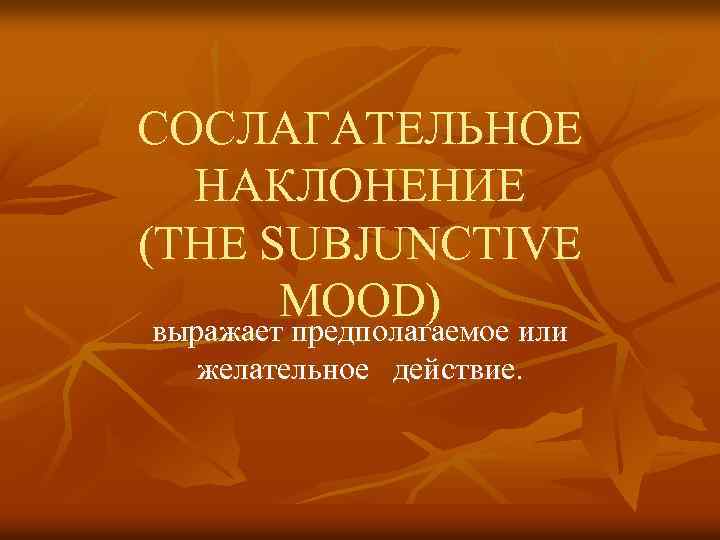
СОСЛАГАТЕЛЬНОЕ НАКЛОНЕНИЕ (THE SUBJUNCTIVE MOOD) выражает предполагаемое или желательное действие.
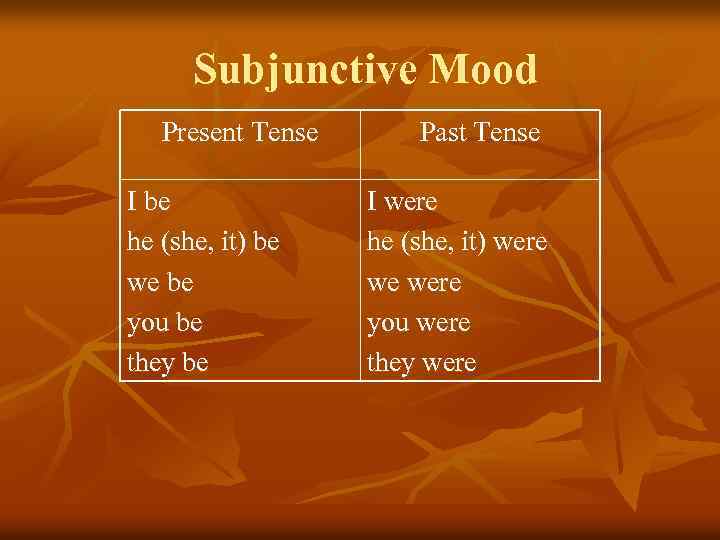
Subjunctive Mood Present Tense I be he (she, it) be we be you be they be Past Tense I were he (she, it) were we were you were they were
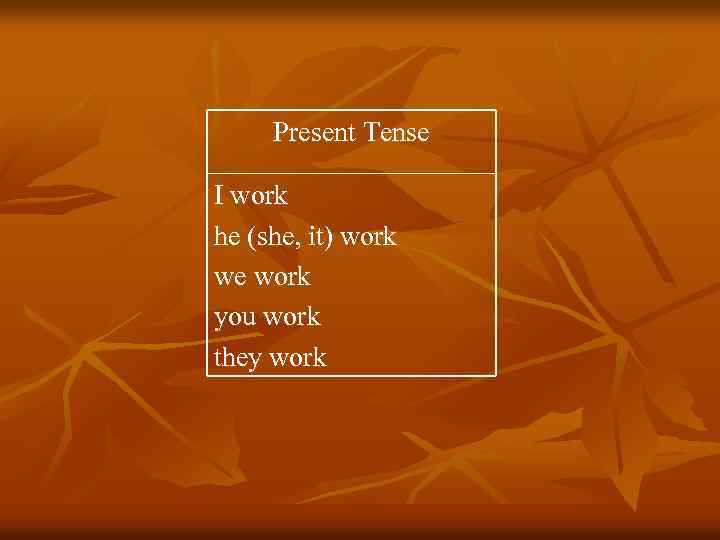
Present Tense I work he (she, it) work we work you work they work
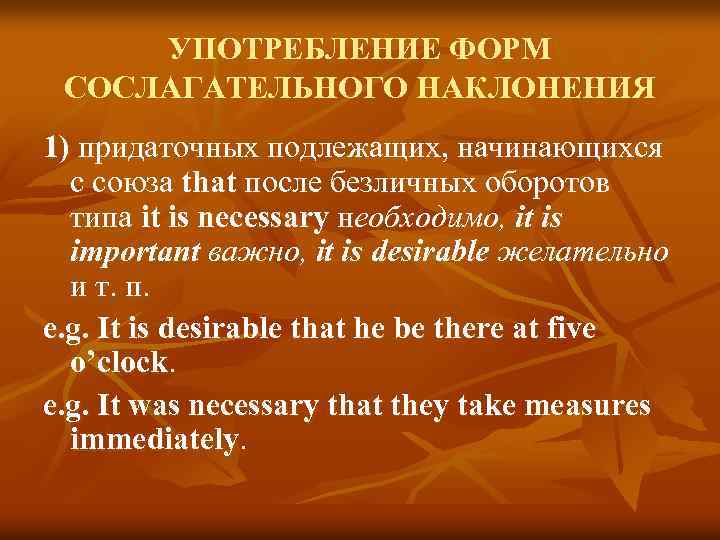
УПОТРЕБЛЕНИЕ ФОРМ СОСЛАГАТЕЛЬНОГО НАКЛОНЕНИЯ 1) придаточных подлежащих, начинающихся с союза that после безличных оборотов типа it is necessary необходимо, it is important важно, it is desirable желательно и т. п. e. g. It is desirable that he be there at five o’clock. e. g. It was necessary that they take measures immediately.
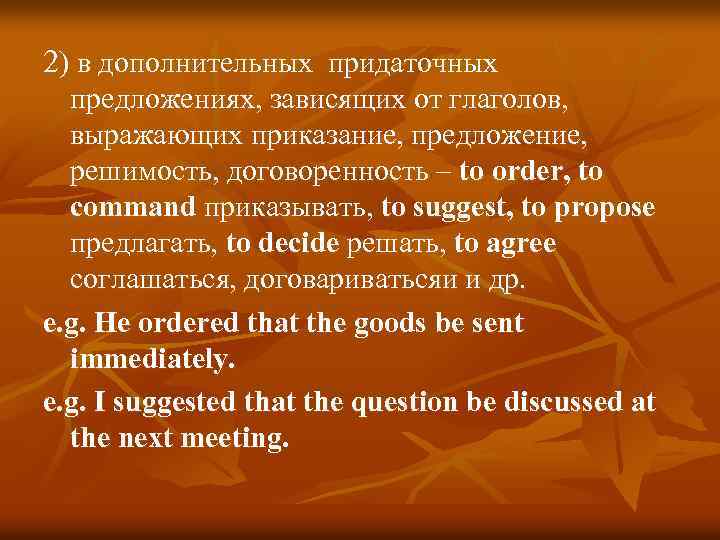
2) в дополнительных придаточных предложениях, зависящих от глаголов, выражающих приказание, предложение, решимость, договоренность – to order, to command приказывать, to suggest, to propose предлагать, to decide решать, to agree соглашаться, договариватьсяи и др. e. g. He ordered that the goods be sent immediately. e. g. I suggested that the question be discussed at the next meeting.
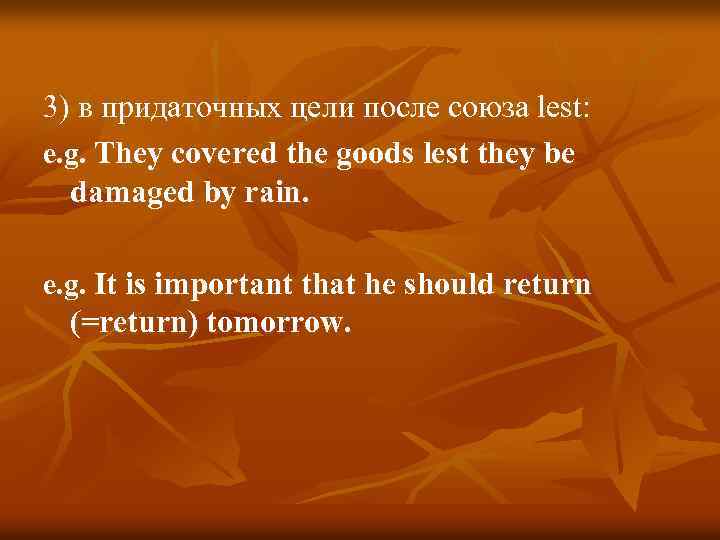
3) в придаточных цели после союза lest: e. g. They covered the goods lest they be damaged by rain. e. g. It is important that he should return (=return) tomorrow.
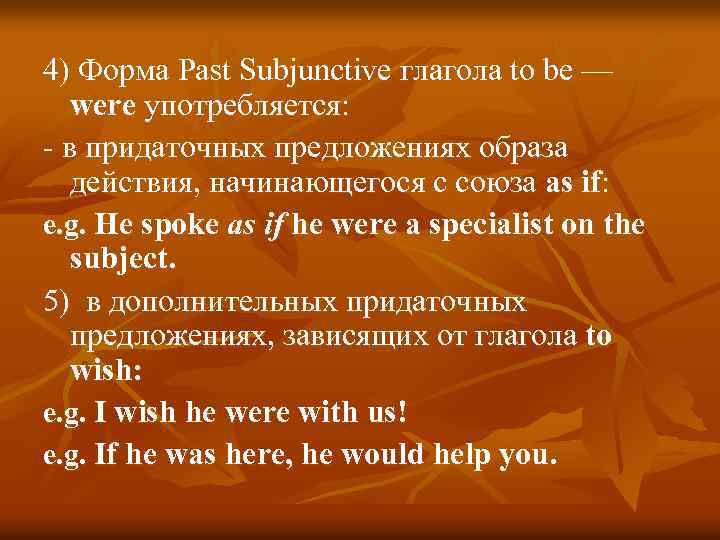
4) Форма Past Subjunctive глагола to be — were употребляется: - в придаточных предложениях образа действия, начинающегося с союза as if: e. g. Не spoke as if he were a specialist on the subject. 5) в дополнительных придаточных предложениях, зависящих от глагола to wish: e. g. I wish he were with us! e. g. If he was here, he would help you.
СОСЛАГАТЕЛЬНОЕ НАКЛОНЕНИЕ_1.ppt